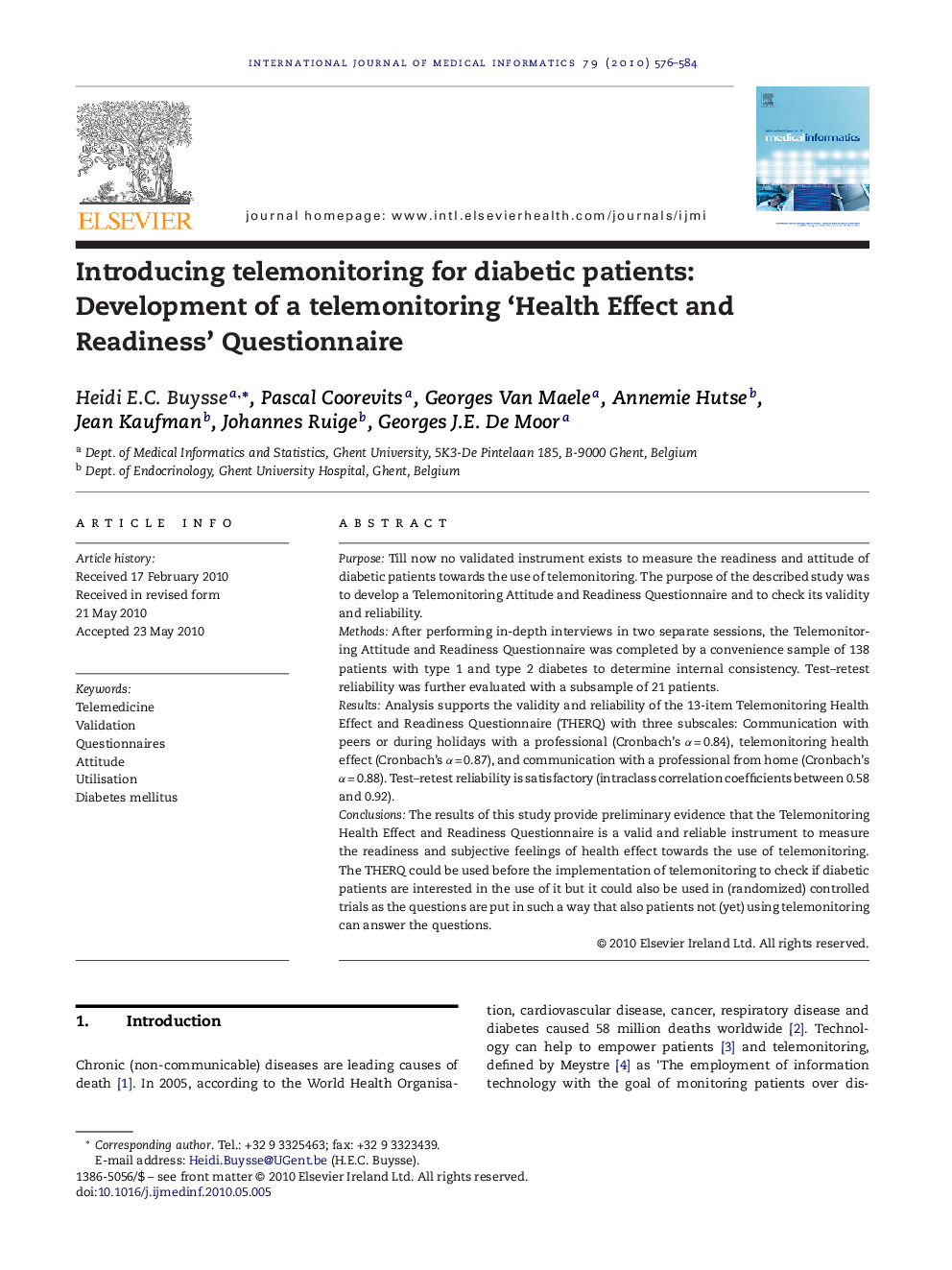| Article ID | Journal | Published Year | Pages | File Type |
|---|---|---|---|---|
| 516985 | International Journal of Medical Informatics | 2010 | 9 Pages |
PurposeTill now no validated instrument exists to measure the readiness and attitude of diabetic patients towards the use of telemonitoring. The purpose of the described study was to develop a Telemonitoring Attitude and Readiness Questionnaire and to check its validity and reliability.MethodsAfter performing in-depth interviews in two separate sessions, the Telemonitoring Attitude and Readiness Questionnaire was completed by a convenience sample of 138 patients with type 1 and type 2 diabetes to determine internal consistency. Test–retest reliability was further evaluated with a subsample of 21 patients.ResultsAnalysis supports the validity and reliability of the 13-item Telemonitoring Health Effect and Readiness Questionnaire (THERQ) with three subscales: Communication with peers or during holidays with a professional (Cronbach's α = 0.84), telemonitoring health effect (Cronbach's α = 0.87), and communication with a professional from home (Cronbach's α = 0.88). Test–retest reliability is satisfactory (intraclass correlation coefficients between 0.58 and 0.92).ConclusionsThe results of this study provide preliminary evidence that the Telemonitoring Health Effect and Readiness Questionnaire is a valid and reliable instrument to measure the readiness and subjective feelings of health effect towards the use of telemonitoring. The THERQ could be used before the implementation of telemonitoring to check if diabetic patients are interested in the use of it but it could also be used in (randomized) controlled trials as the questions are put in such a way that also patients not (yet) using telemonitoring can answer the questions.
